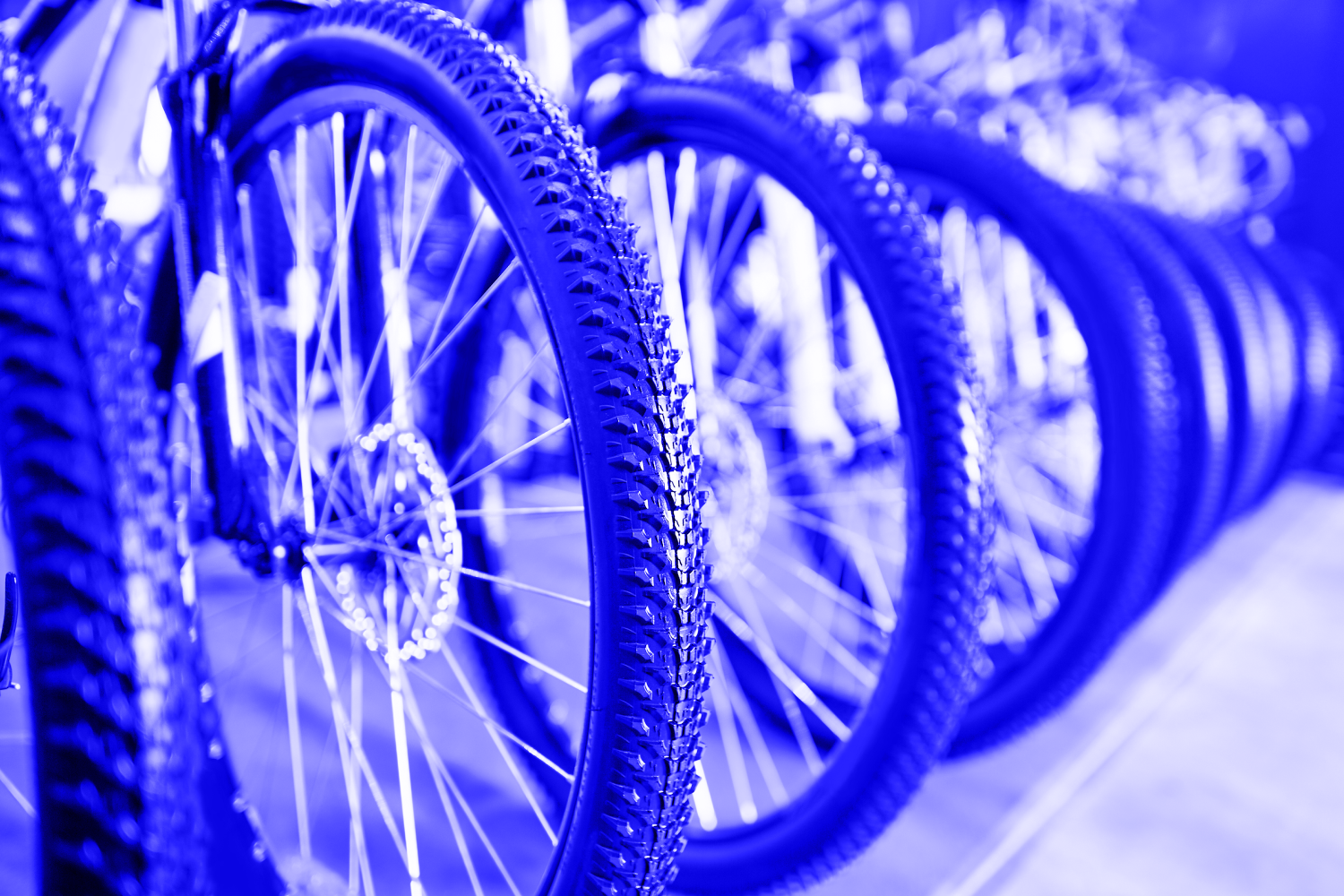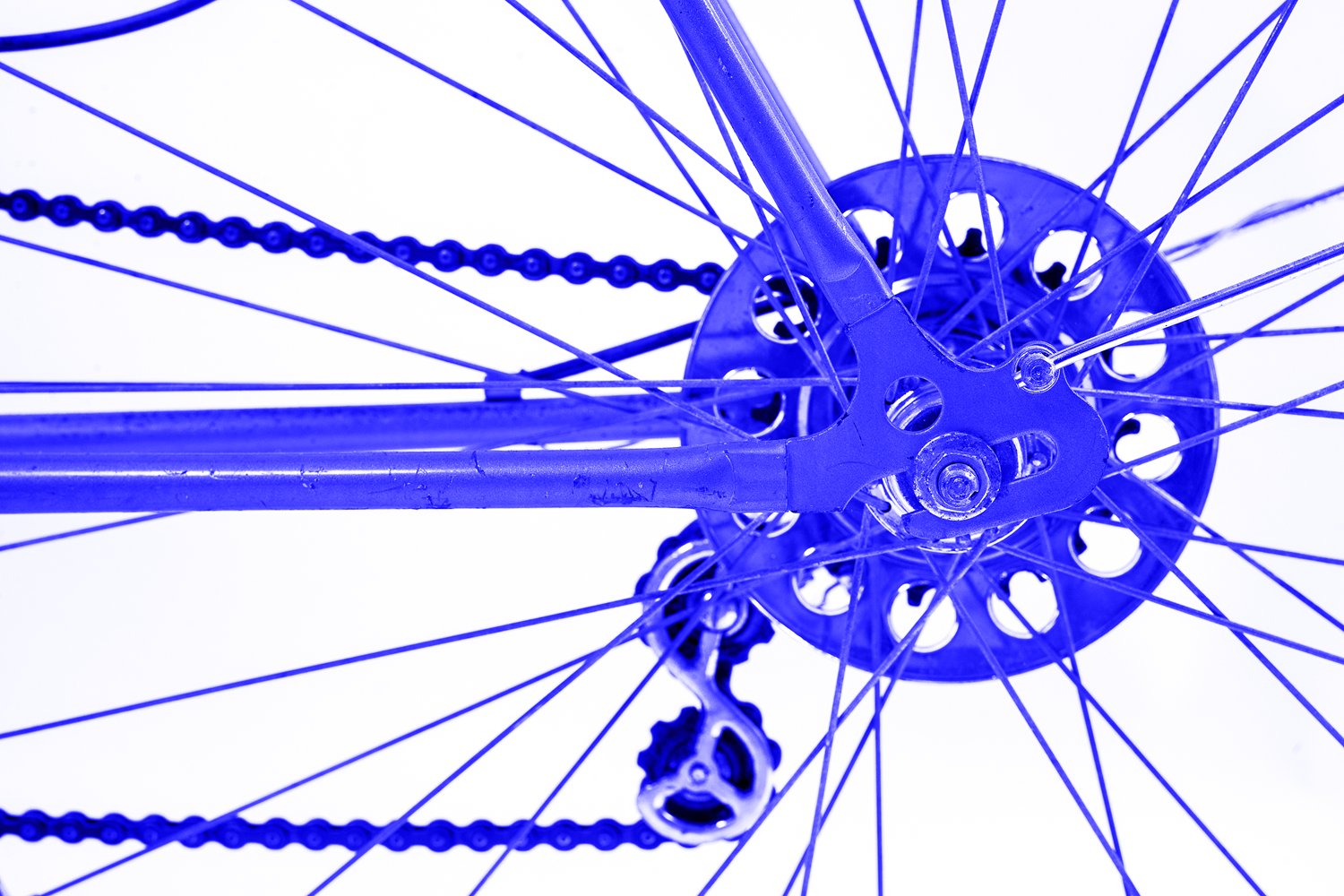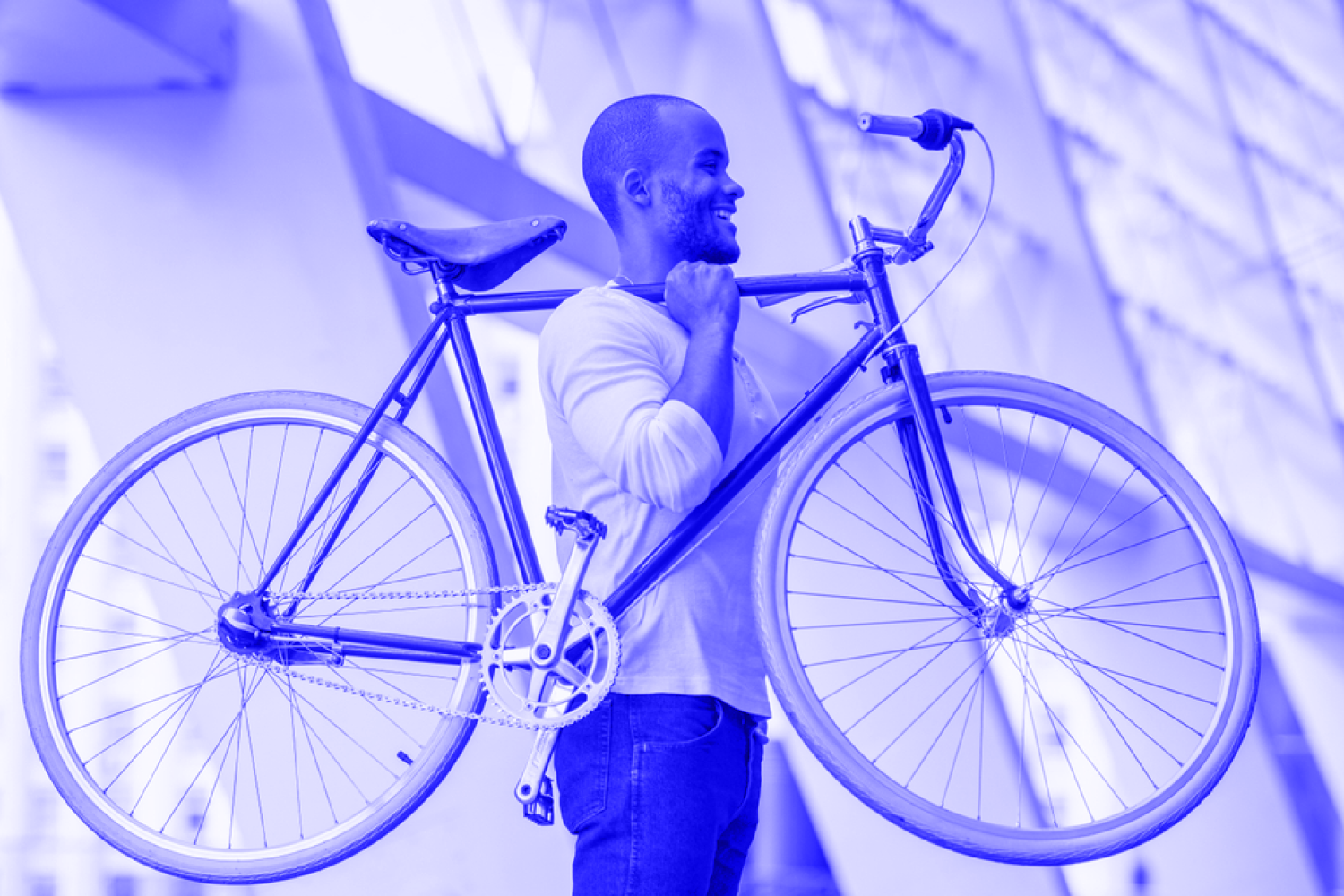It’s easy to understand the appeal of a used bike. Whether you’re searching for a daily commuter, sleek road bike, or something to tackle trails on the weekend, secondhand rides are often affordable, easy to find, and still have plenty of life left in them. And with tariffs forcing bike companies to raise prices, the preowned market is about to become even more crowded.
Buying used is also a sustainable choice. You’ll save a perfectly good bike from an uncertain fate and avoid the carbon emissions and packaging waste that come with a brand-new one. The average manufacturing footprint a bike is between 96 and 110 kilos of CO2. That’s not huge on an individual basis (it’s equivalent to around 23 burgers), but it does add up when you consider that Americans buy around 20 million two-wheelers a year.
For the bike-curious, there’s never been a better time to shop around. There are scores of online marketplaces, including heavily vetted resellers like The Pro’s Closet and Pinkbike, where you can find a pre-owned or refurbished ride. But one of the best places to shop for a used bike is Facebook Marketplace. “It’s kinda the spot these days,” says Jeremy Benson, a professional bike tester and editor at Bike Rumor. “It makes it super easy to find bikes in your area.”
The challenge with going peer-to-peer, though, is that it requires patience and a little expertise. Otherwise, a good deal on a used bike can quickly turn into a costly mistake. Choosing a bike that’s the wrong size or style can lead to uncomfortable rides, expensive fixes, and even injury. Plus, that seemingly perfect commuter you’re eyeing might be well cared for and honestly described—or it could be a poorly maintained junker with fresh paint masking hidden damage. One of the biggest mistakes used bike shoppers make is rushing through the process. “They don’t shop around,” says Benson. “They just want to get it over with, but there’s no reason to settle for ‘good enough’ when you can find something that really works for you.”
Finding the right bike means asking the right questions, studying up on components, and learning a few inspection techniques. “You want a used bike with a good past and solid bones,” adds Al Amin Morshed, a bike tester and founder of the resource Bolt Bikers. “Ride it, feel it, and trust your gut.”
Here’s how to shop for a used bike with confidence.
Know exactly what you’re looking for

Before you begin poring over potential new-to-you rides and comparing prices, familiarize yourself with the different types of bikes, as well as how bike are sized for fit. When browsing, prioritize listings that have multiple photos as well as clear shots of individual components. Don’t put much faith in stock images or posts with vague or non-existent descriptions. Here are a few things to determine before you start shopping:
Bike type
What are you interested in? A commuter? Something simple to cruise around on local streets and maybe some trails? Want to tackle singletrack every weekend? A (very) brief primer: Road bikes are lightweight, fast, and built for smooth pavement. Mountain bikes are designed tough for trails and rough terrain; they have suspension systems and wide, ridged tires to help them absorb the bumps of rough terrain. Hybrids fuse the two, and are ideal for commuting and some light trails.
Frame material
What a bike is made out of matters, too, and most used ones will be aluminum, steel, or carbon. Aluminum frames are rust resistant, lightweight, and affordable—but they also ride a bit stiffer on rougher terrain. Steel frames are heavier and more prone to rust, but they’re smooth-riding, comfortable, and usually pretty easy to repair. Carbon frames are incredibly light, stiff, and responsive, but they’re prone to cracking and are quite expensive.
Frame size
No matter how good a deal looks, a bike that doesn’t fit you properly is never worth it. Take time to figure out your ideal frame size. The most important measurement? Your inseam: Stand up and measure the distance from your crotch to the floor.
As a general rule, per REI’s fit guide, you should aim for at least 1 inch of clearance between your crotch and the top of the frame for road bikes, and 2 to 3 inches for mountain bikes. If you’re not sure what frame is right, stop by your local bike shop and ask them to measure you. You can also use an online bike fit calculator like this one from OmniCalculators.
Inspect the bike

When he’s looking at a used bike in person, the first thing Benson likes to do is get a sense of its general appearance. “Bikes that have been treated well and maintained will look the part,” he says. “Bikes that have been abused and put through the wringer will also look the part.”
Look for signs of care—or disrepair
Look for major scratches, dents, cracks, or anything that might suggest a bike has been left outside or damaged in a crash. Do the tires have tread left? Are the teeth on the chain worn down or bent? Is the chain rusty, super greasy, or dirty? Importantly, take a close look at the frame, scanning for any cracks or dents near welds or stress points, suggests Morshed. “Cosmetic scratches are fine, but any structural damage is a deal-breaker.” And if it does have any scratches, Benson adds, a trustworthy seller will point them out instead of trying to hide them.
Lots of folks take pride in their bikes, and their care will be obvious. You might notice a few newer parts like fresh tires, brake pads, or drivetrain components—all of which can signal that it was recently serviced. “If someone is selling a bike with super worn tires, clearly worn-out parts, or they didn’t even bother to clean it, then they probably didn’t take good care of it,” he says.
Put it through its paces
“Never judge a bike by looks alone,” says Morshed. “It can appear spotless but still have hidden issues under the frame or inside the drivetrain.” In other words: Get hands-on and perform the below tests. “If you don’t know what you’re looking at, take it to a shop and have them inspect it for you,” adds Benson.
- Lift the back wheel and spin the pedals. If the chain skips, or the cassette teeth are worn down to something resembling shark’s fins this, per Morshed, could mean drivetrain trouble, which usually isn’t a cheap fix.
- Spin the wheels and listen. You want to give it “a quick spin to make sure it’s still round and ‘true’”—that is, it doesn’t wobble, Benson says. Also listen for any grinding noises. If you hear any, it may mean the hubs or bearings are no good.
- Shift through all the gears. Look at the derailleur (aka the little arm that shifts the chain) and inspect it for any damage. “Then try it out to make sure it shifts well through all the gears with no skipping or missed shifts,” says Benson.
- Apply the brakes: The levers should pull evenly and the pads should grip both the front and rear wheels with equal force, Benson advises.“If they are disc brakes, check the pads in the rotors for wear, check if the rotors rub, and look for leaking oil if they are hydraulic,” he adds.
- Inspect the suspension (if applicable): Apply downward pressure to the front and rear shocks. Do they compress and return smoothly? Also keep an eye out for any leaking fluids.
Ask the right questions
Your goal when chatting with the seller is to find out how the bike was used and maintained. Think about the questions that apply to your particular needs. For instance, if you’re looking for a mountain bike, you might specifically ask about its suspension service, says Benson. In any case, be sure to ask these five questions:
- Why are you selling it?
Why to ask: It gives you insight about the seller as well as the bike’s history. - When was it last serviced, and where?
Why to ask: This tells you whether it was professionally maintained—and how recently. That’s especially important if you’re buying a bike with expensive components like carbon fiber wheels or electronic shifters. - How often was it ridden?
Why to ask: Again, this gives you an idea of the seller’s level of care and the bike’s condition. Keep in mind, a bike with thousands of miles on it can be a great purchase if its owner has kept up with maintenance. - Have any components been upgraded or replaced?
Why? to ask: It gives you a sense how well the bike’s been maintained. Depending on the answer, it can give you peace of mind about the drivetrain—the collective term for the gears, chain, and derailleur—and brakes. - Do you have proof of ownership?
Why to ask: Bike theft is common. Always ask to see the serial number and cross-check it on Bike Index or Bike Register. If the serial number is missing or scratched off, that’s a big red flag.
Take it for a ride

Everything checks out, and you’re just about convinced this it “the one.” The last—and perhaps most important—thing is to see how it rides. Even if everything up until now has been spot-on, your comfort should be the ultimate decider. “If the seller says you can’t ride it, walk away,” says Morshed.
- Check the fit: Make sure you can straddle the top tube with a bit of clearance, reach the handlebars comfortably, and pedal without overextending your knees. If anything feels off, it’s probably not the correct size.
- Try everything: Go for a 5-10 minute ride. Shift through the gears, brake hard, and stand up on the pedals to stress-test the frame a bit. Listen and feel for any issues: Do you hear any weird creaks or groans? Struggling gears? Are the brakes squeaking or rubbing audibly? Is it steering smoothly? “If the seller says you can’t ride it, walk away,” says Morshed.
Don’t settle
Remember: The right bike is out there. It’s just a matter of taking the time to find it. Be patient and don’t be afraid to turn down a bad deal. Buying a used bike takes patience, but the right one will feel right.
And if you’re still not feeling confident, ask a friend who knows about bikes to come with you for the evaluation. And, as always, you can send any specific questions to editors@one5c.com.

